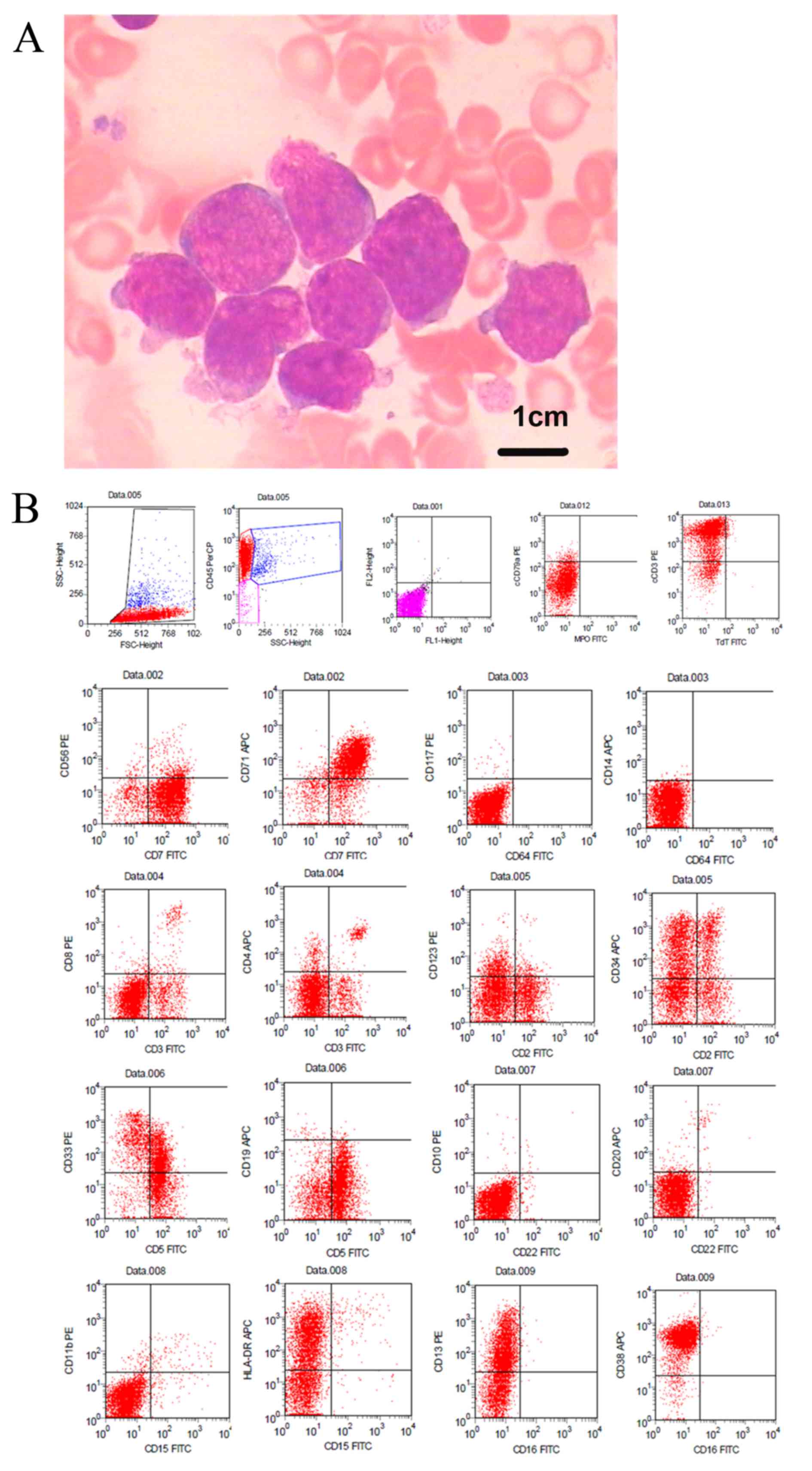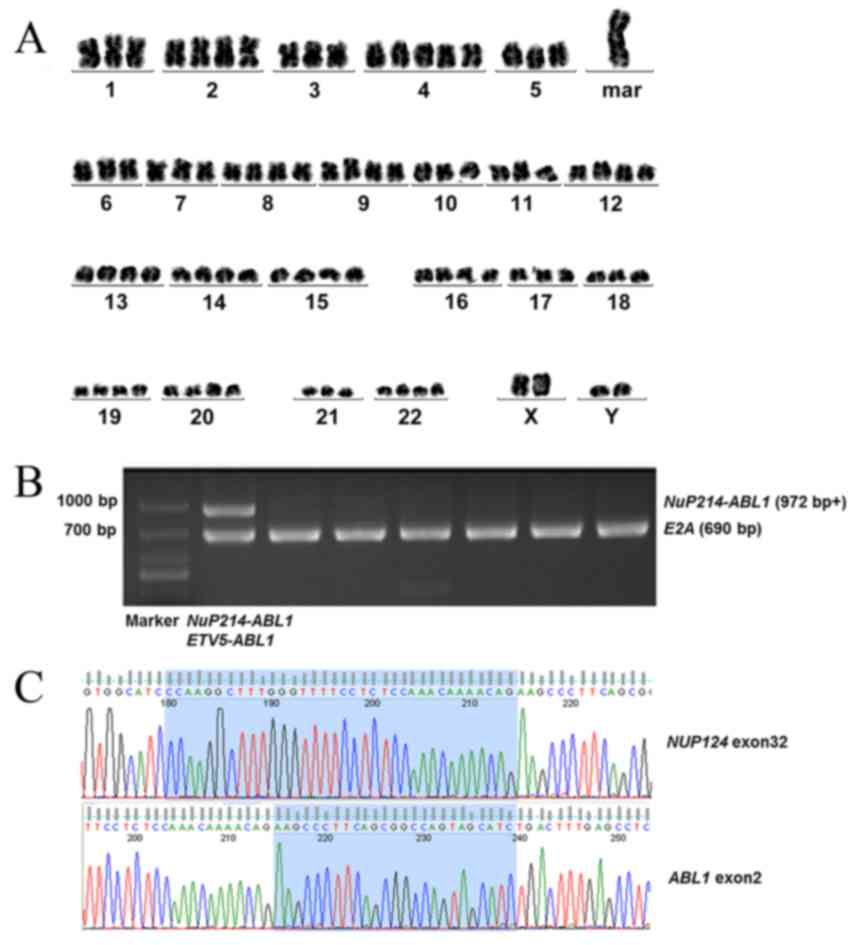Dasatinib and chemotherapy in a patient with early T‑cell precursor acute lymphoblastic leukemia and NUP214‑ABL1 fusion: A case report
- Authors:
- Published online on: August 28, 2017 https://doi.org/10.3892/etm.2017.5046
- Pages: 3979-3984
-
Copyright: © Chen et al. This is an open access article distributed under the terms of Creative Commons Attribution License.
Metrics: Total
Views: 0 (Spandidos Publications: | PMC Statistics: )
Total PDF Downloads: 0 (Spandidos Publications: | PMC Statistics: )
Abstract
The present study aimed to evaluate the therapeutic efficacy of dasatinib in a patient with nucleoporin 214‑tyrosine protein kinase ABL1 proto‑oncogene 1 (NUP214‑ABL1)‑positive early T‑cell precursor‑acute lymphoblastic leukemia (ETP‑ALL), as well as that of selinexor and dasatinib for NUP214‑ABL1‑positive ETP‑ALL in vitro. ETP leukemia is a form of T‑cell ALL (T‑ALL) with poor prognosis. The NUP214‑ABL1 gene is present in ~6% of T‑ALL cases, however the prevalence of NUP214‑ABL1 gene expression in ETP‑ALL in particular has not yet been verified. The current study reports the rare case of a 29‑year‑old man with ETP‑ALL harboring the NUP214‑ABL1 fusion gene, presenting with low‑grade fever, stomachache and splenomegaly. The patient was successfully treated with dasatinib and vincristine, idarubicin, cyclophosphamide and prednisone (VICP) chemotherapy. The therapeutic efficacy of selinexor and dasatinib was also evaluated in vitro. Apoptosis was analyzed using Annexin V/propidium iodide staining and flow cytometry, and poly ADP‑ribose polymerase (PARP) cleavage was detected using western blot analysis. The results demonstrated that the apoptotic cell population significantly increased following selinexor or dasatinib treatment compared with the control (P<0.05). Furthermore, combined selinexor and dasatinib treatment led to a significant increase in cell apoptosis compared with either treatment alone (P<0.05). The apoptosis results were confirmed by PARP cleavage. Thus, NUP214‑ABL1 fusion gene expression should be tested in T‑ALL, including ETP‑ALL. Dasatinib used in combination with traditional induction chemotherapy may reverse the high induction failure of ETP‑ALL with NUP214‑ABL1 fusion gene; however, further prospective studies are required to confirm this. Therefore, selinexor with or without dasatinib may serve as a potential salvage therapy in the case of relapse and may be developed as a novel treatment for ETP‑ALL with the NUP214‑ABL1 fusion gene.












